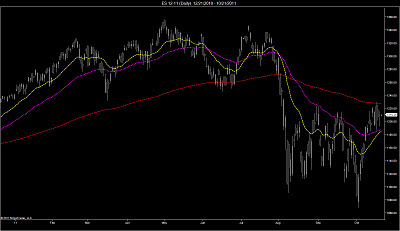It was rollover and I was standing close to the center of the bond pit so that I would have access to both the spread paper and 2nd month brokers, when Darrell Zimmerman walked up to me. The bond market was experiencing a brief respite from it’s usual frenzied trading activity and Darrell had taken the opportunity to come by and talk to me. He informed me that he was working with some large institutional traders in New York and overseas, and that they were going to be trading some size in the 30 year. He then asked me if I would like to fill their orders, or at least a portion of them. I explained to Darrell that although I occasionally did brokerage, it was only as an accommodation to the floor brokers I stood next to, so that they would be able take a break or have lunch.The majority of the time I functioned as a trader, and I wasn’t interested in being taken out of the market, to fill some orders. Besides, I didn’t know who these customers were. Darrell went on to tell me that there was going to be a considerable amount of business, and that if I did a good job, I could have the deck. I respectfully declined his offer and Darrell walked away. It wasn’t long before I saw Darrell talking to another broker on the other side of the pit, and then another. Little did I know, that I had just made one of the smartest decisions of my life.
I had met Darrell and his wife Lisa, who doubled as his clerk, in the lounge of my clearing firm. He was a very talkative and gregarious guy, but in a used-car-salesman kind of way. He was a perennial bust-out, kicked out of numerous clearing firms at both the Merc and the Board, but now had an account where I cleared my trades. There were a lot of Darrells that hung around the Merc and Board; ego-driven dreamers that chronically blew up their trading accounts, yet always found a way to get back in the game; hanging on a little while longer before justice was inevitably meted out. A lot of them would quietly disappear, while others would get jobs on the floor, evaporating into the milieu of floor clerks never to be seen or heard from again, yet always fantasizing about making it big one day.
Every trader did it; dreamed about the big trade; fantasized about taking a shot. Chicago’s traders had their own mythical way for making this dream come true, the O’hare spread. The idea was to put on an incredibly large position, get in a cab, and head for O’hare airport. If the trade was a winner, you either returned home or got on a plane to Hawaii - if the trade was loser, you bought a one way ticket to a country that did not have an extradition agreement with the U.S. We also had a saying, “If you are going to blow out, blow out big” If your debit was too small, your clearing firm would write off the loss, and then write you off. But in the CBOT's version of “too big to fail", if you hurt your clearing firm bad enough, they would arrange a way for you to generate the income necessary, to pay them back. Apparently, Darrell had taken these fantasies to heart having already already planned to put on an O'hare spread, before he approached me in the pit that day. While I had refused his offer, he did manage to enlist 9 unwitting brokers to assist him and his partner, Tony Catalfo, in a scheme that would bring down one of the oldest clearing firms at the CBOT.
The bell rang at 7:20 AM on a Thursday morning and Tony, who had strategically placed himself in the Bond options pit, was buying up every at-the-money put he could get his hands on. Meanwhile, Darrell was putting in huge sell orders in the bonds to the 9 brokers whose help he had enlisted earlier. Tom Baldwin was on the other side of the bulk of these orders, and when the options traders started to lay off the puts they sold to Tony, with short hedges in the bond futures, panic ensued and the market had nowhere to go but down. Darrell then entered the pit himself and began to sell more bonds. In the Bond options pit, the put options were going through the roof, and Tony was beginning to take profits on his long put position. This all took place before 7:30 AM, when an economic release came out which was negative for bond prices. In a stroke of incredible luck, the market broke even more and Tony covered the balance of his position for about a 1.5 million profit, while Darrel was now short about 12,000 bond futures, and up about 5MM on his open position. The feedback loop of selling they had created was working perfectly.
Darrell had been dismissed long ago from my clearing firm, and along with Catalfo, was now clearing Stern & Co., a family run business that was founded by Lee B. Stern. Lee had made his fortune trading grains, and owned the Chicago Sting soccer franchise, a piece of the White Sox, and was one of the most respected members of CBOT. Lee rarely came onto the floor anymore, but when he did make an appearance in one of the grain pits, his actions were highly scrutinized by other traders, as a possible clue to where the market was headed.
Bad news travels fast in the futures industry and virally fast on the floor, so it did not take long for word of Zimmerman’s and Catalfo’s involvement in the bond panic, to reach Stern’s office. Lee’s son and a few of the firm’s employees rushed to the floor and quickly enlisted the help of the security guards. Zimmerman had lost his count and was standing outside of the pit when they grabbed him, while they physically pulled Catalfo out of the Bond options pit. After witnessing this melee, traders in both pits began to piece together what had happened. Tom Baldwin , who had been unsuccessfully taking the opposite side of Zimmerman’s orders, realized the sell-off had been artificially induced, and that traders would have to cover their shorts. He quickly took advantage of the situation and began to bid up the price of bonds. Bond futures and bond options prices reversed on a dime and snapped back with a vengeance.
Meanwhile, Stern’s employees, who had wrestled the trading cards out of Tony and Darrell’s hands, were frantically trying to get a handle on what was now, Stern's position. In addition to the trades that Tony and Darrell had made, were the fills of the 9 floor brokers, which had to be collected and aggregated in order to get an accurate count. It took them 2 hours before they could figure out the position, and what had been a $5MM winner, had turned into an $8.5MM loser by the time the position was liquidated. Had they been able to figure out Zimmerman’s position quicker, and not tipped off floor to what was going down, Stern could have escaped with anywhere from a small loss to a small gain. Instead, Stern had to make good for Zimmerman’s $8.5MM loss, and as a result, lost it’s clearing status after 25 years in business, and had to lay off 20 employees.
Catalfo tried to collect on his $1.5MM profit on his options position, but received a 42 month prison sentence instead.The proceeds from his trades were awarded to Stern to help offset his losses, while Stern went after the 9 filling brokers for the balance. Zimmerman hopped in a cab to the airport and got on a plane to his parents home in Canada, completing the other leg of the O’hare spread. He was eventually extradited and sentenced to 42 months for his efforts. Darrell Zimmerman came very close to pulling off his insane plan, but he let his ego and his greed get the best of him. Had he executed his plan on a smaller scale, in a more restrained manner, he might not have aroused the suspicion of his clearing firm. He had the market right where he wanted it, and had he not lost his count and tipped his hand, he might have been able to cover his position while it was still a huge winner. Whether they would have let him keep his profits is highly dubious, because Zimmerman’s sole legacy from his lunatic scheme, is the eponymously named rule, that allows clearing firms to seize the profits of any trader that attempts to take a shot at them.
















